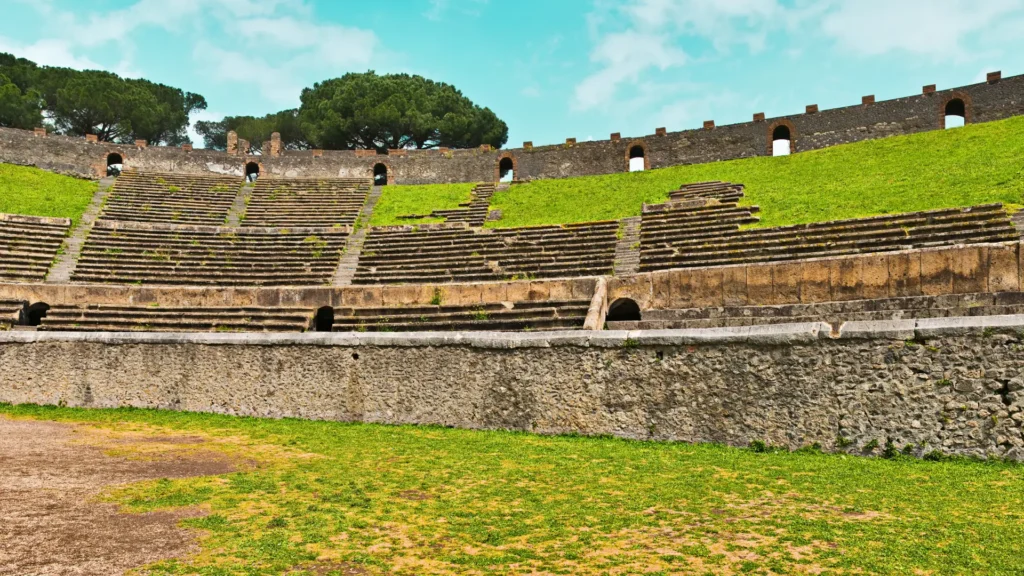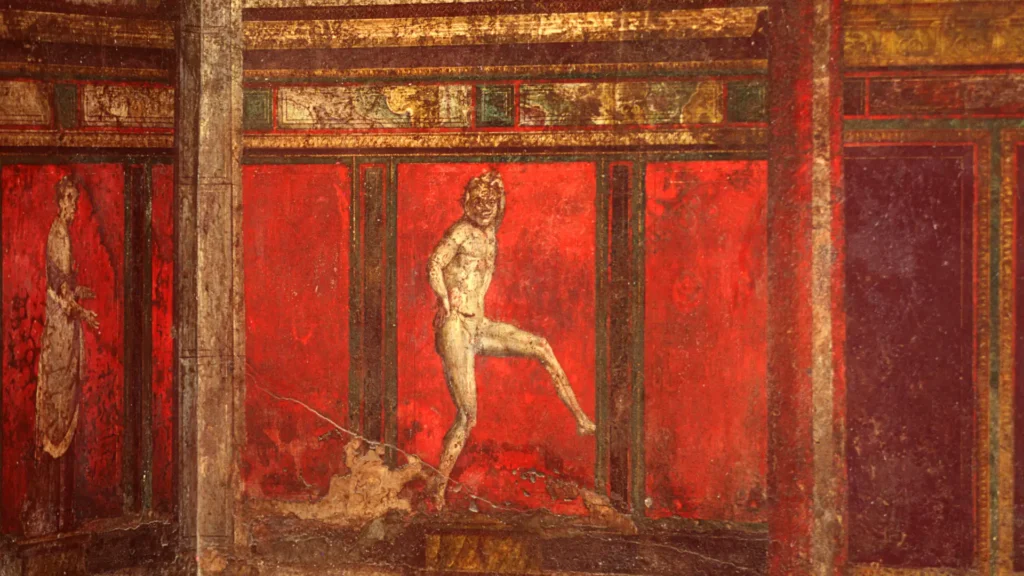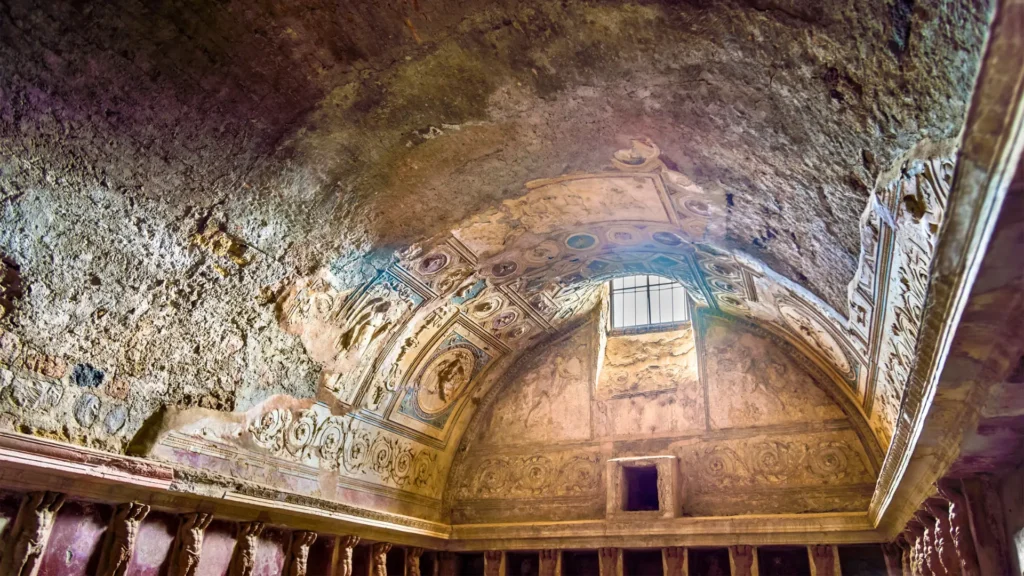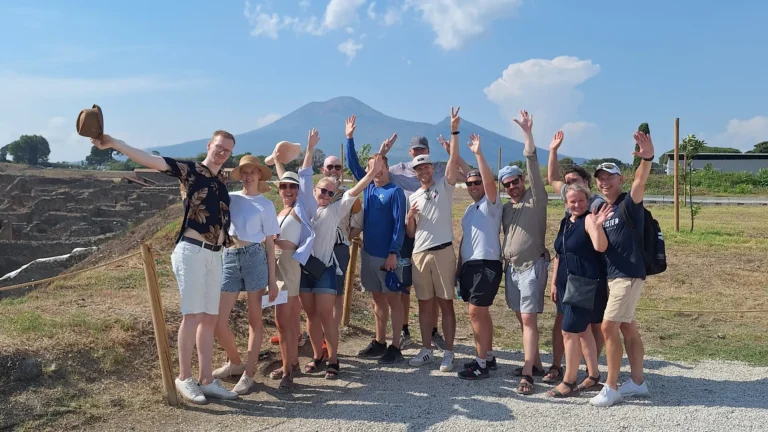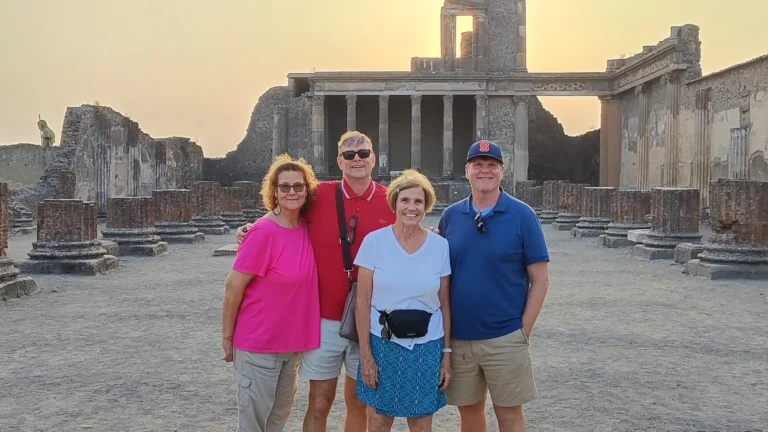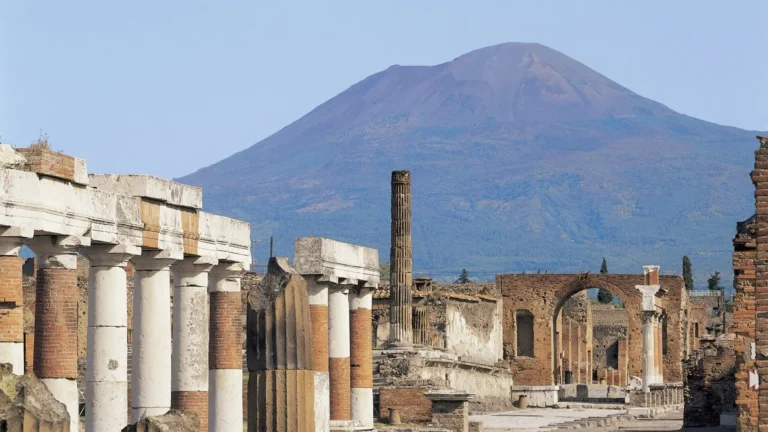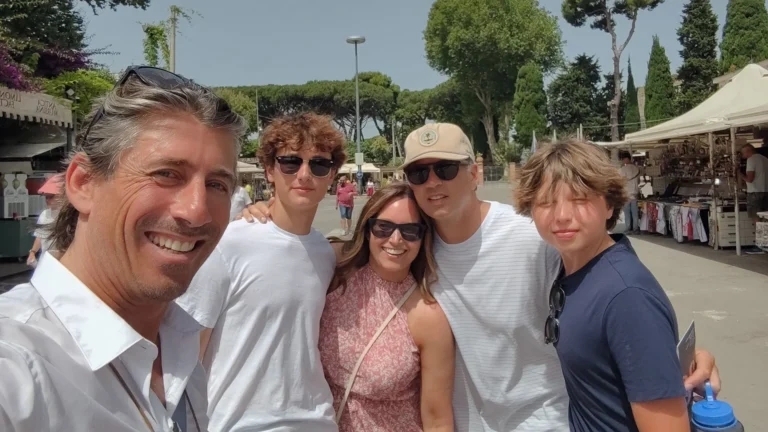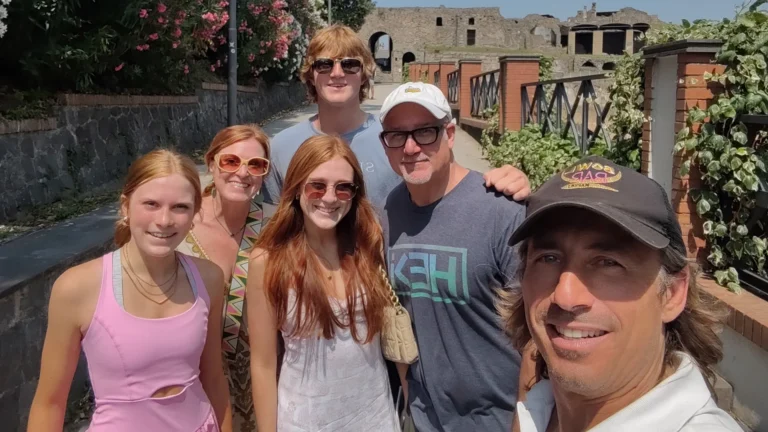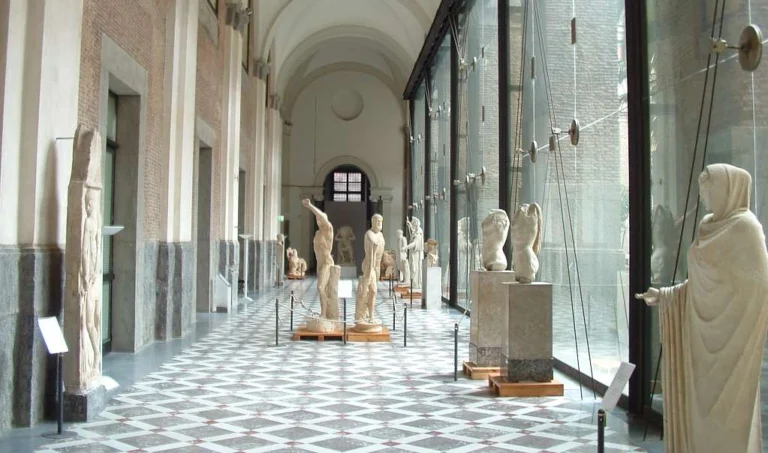Pompeii is one of the most fascinating archaeological sites in the world – a city frozen in time by the catastrophic eruption of Mount Vesuvius in 79 AD. Walking through its well-preserved streets offers a rare glimpse into daily life at the height of the Roman Empire. From grand Roman villas to humble shops and bakeries, Pompeii’s ruins tell the story of a thriving civilization halted in an instant, leaving behind an unparalleled archaeological treasure.
Why visit Pompeii?
Few places bring the ancient world to life as vividly as Pompeii. Unlike typical ruins, the layers of volcanic ash and pumice that buried the city acted as a natural time capsule, preserving buildings, intricate mosaics, and even graffiti. Exploring this remarkably intact Roman city feels like stepping into a snapshot of daily life in ancient Rome, complete with bustling marketplaces, lavish public baths, and impressive amphitheaters where gladiators once fought.
Top attractions in Pompeii
The Forum
The Forum of Pompeii was the heart of public life, a vast open-air square surrounded by temples, markets, and administrative buildings. From here, you can admire the remains of the Temple of Jupiter, once a focal point of religious worship, with the imposing Mount Vesuvius looming in the background. This central area offers visitors a glimpse into the grandeur of ancient Pompeii, showcasing the city’s political, economic, and social significance.
The Amphitheater of Pompeii
Built around 70 BC, the Amphitheater of Pompeii is one of the oldest surviving Roman amphitheaters. This impressive arena once hosted gladiator battles and grand public spectacles, drawing crowds of up to 20,000 spectators. Walking through its ancient stone corridors transports visitors back to a time of roaring crowds, fierce contests, and the thrill of Roman entertainment.
Villa of the mysteries
Located just outside the ancient city walls, the Villa of the Mysteries is renowned for its remarkably well-preserved frescoes, believed to depict mysterious Dionysian initiation rites. The vivid colors and intricate details of these paintings have withstood the passage of time, offering a rare glimpse into Roman art and religious rituals. This extraordinary archaeological site is a must-see for art lovers and history enthusiasts visiting Pompeii.
The Baths
The Stabian Baths were an essential part of daily life in Pompeii, serving as a hub for both hygiene and social gatherings. Visitors can explore the various chambers, including the hot bath (caldarium), the warm bath (tepidarium), and the cold bath (frigidarium). These well-preserved thermal baths showcase advanced Roman engineering, featuring intricate heating systems, vaulted ceilings, and decorative frescoes. They highlight the importance of public bathing in Roman culture, where relaxation and conversation were as vital as cleanliness.
A glimpse into roman life
As you wander through Pompeii’s ancient streets, you’ll come across private homes, bustling taverns, and even a well-preserved brothel. The Lupanar of Pompeii, the city’s most famous brothel, still features detailed frescoes depicting the services once offered, providing a rare insight into Roman society and daily life. Meanwhile, graffiti etched into the walls tells personal stories of political campaigns, love affairs, and everyday struggles, adding a human touch to this remarkable archaeological site. One of the most moving and haunting parts of Pompeii is the plaster casts of the victims, discovered during excavations. These casts preserve the final moments of people and animals caught in the catastrophic eruption, serving as a poignant reminder of the tragedy that struck the city. The level of detail in these casts, from facial expressions to body positions, offers a profound connection to the past, making Pompeii’s ruins not just an archaeological site, but a memorial to a lost civilization.
Tips for visiting Pompeii
Best time to visit
Visit early in the morning or late afternoon to avoid crowds and the midday heat
Guided tours
A guided tour can provide valuable context and bring the ruins to life. Alternatively, audio guides are available at the entrance
Wear comfortable shoes:
Pompeii is vast, and the ancient cobblestone streets can be uneven. Comfortable footwear is essential for exploring

